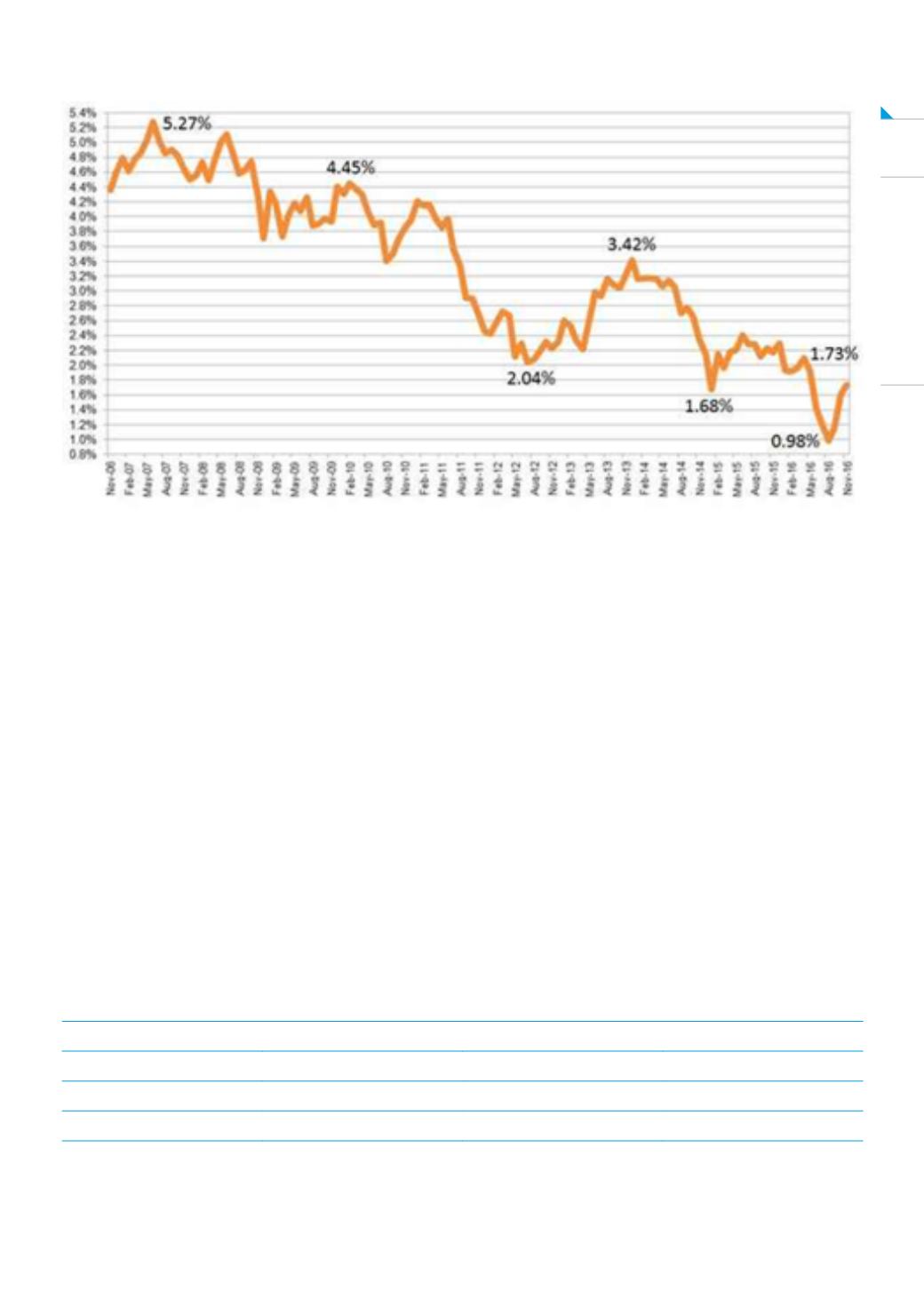
DIY Investor Magazine
|
June 2017
49
Asset Class
5 year
10 year
20 year
Inflation RPI
3.0
3.1
3.3
Cash
0.5
1.3
1.9
UK Gilts
0.5
1.3
1.9
UK Index Linked
0.6
1.2
1.6
UK Corp Bonds
1.7
2.6
3.2
Figure 2. Yield on 15-year Gilts over ten years. Source:
Figure 2. The benchmark 15-year Gilt over ten years
highlights the dramatic and consistent fall in yields (and
thus rise in bond price).
Falling yields have had several impacts:
•
Bond holders – e.g. in Cautious managed funds,
have profited handsomely with little apparent risk
(volatility);
•
DB schemes have bought more and more bonds
to match their liabilities which, coupled with QE has
forced bond prices up and driven yields down;
•
Corporates have issued more bonds as a cheaper
source of finance than equity;
•
Some, notably Government debt, yields have been
driven negative; over $13bn of Government debt
around the globe is in negative yield.
Ultra-low yields causes significant risk in bond markets
and whilst there is currently no liquidity crunch, rising
inflation may trigger a rapid reversal of yields and sharp
fall in bond prices; credit markets have historically
shown this can be a rapid and violent change in
direction.
Low yields also impacted annuity rates which prompted
the UK Government to introduce the 2015 pension
freedoms which have helped drive greater interest in DB
transfers.
Low yields, and corresponding high prices, make bonds
potentially an asset class with poor long term value:
Figure 3. Forecast absolute returns for various asset
categories. Source: JLT Flash Report December 2016.


